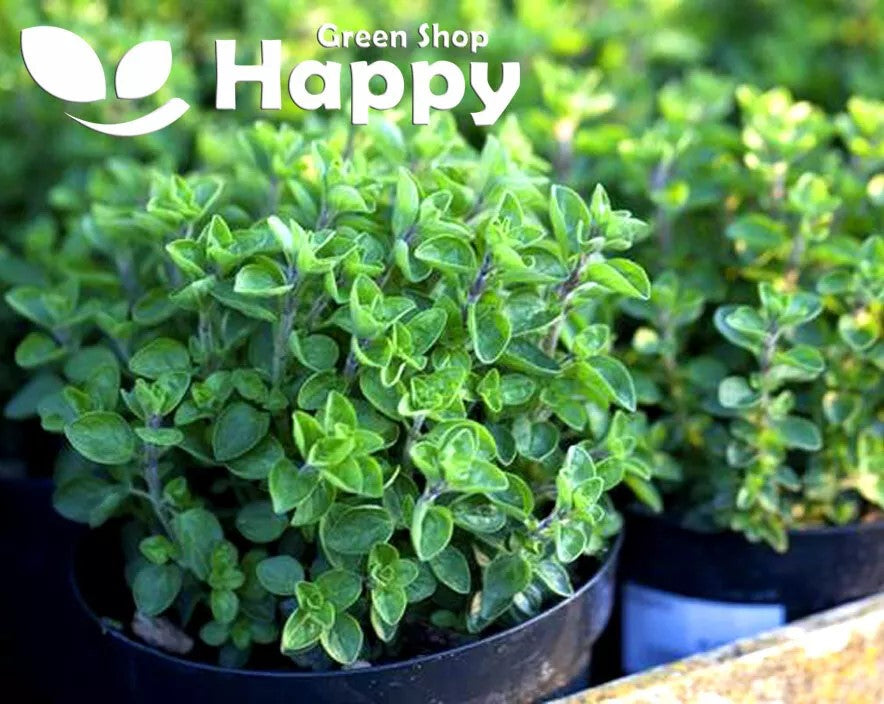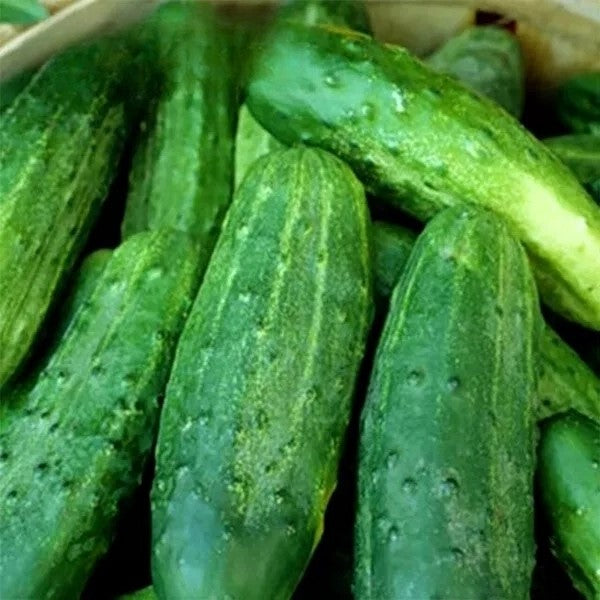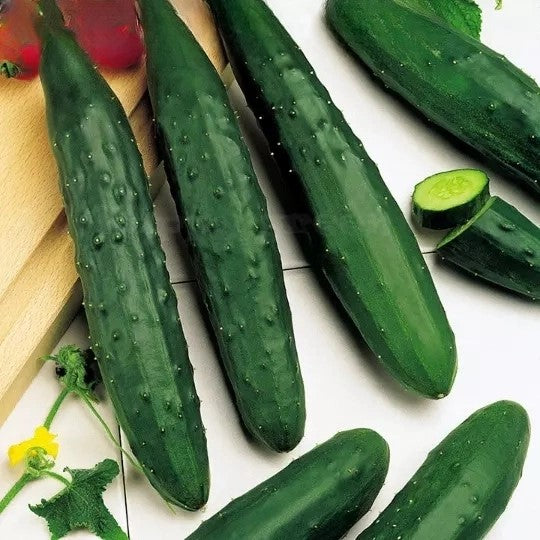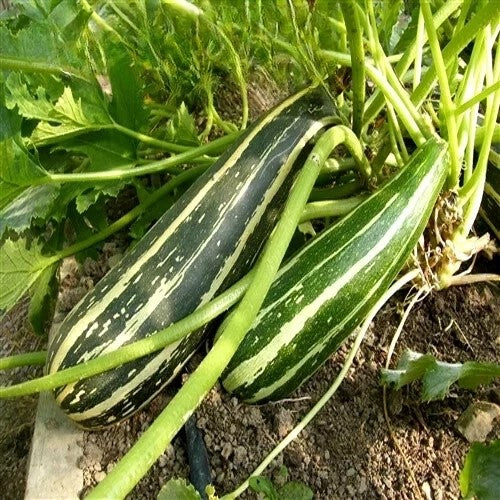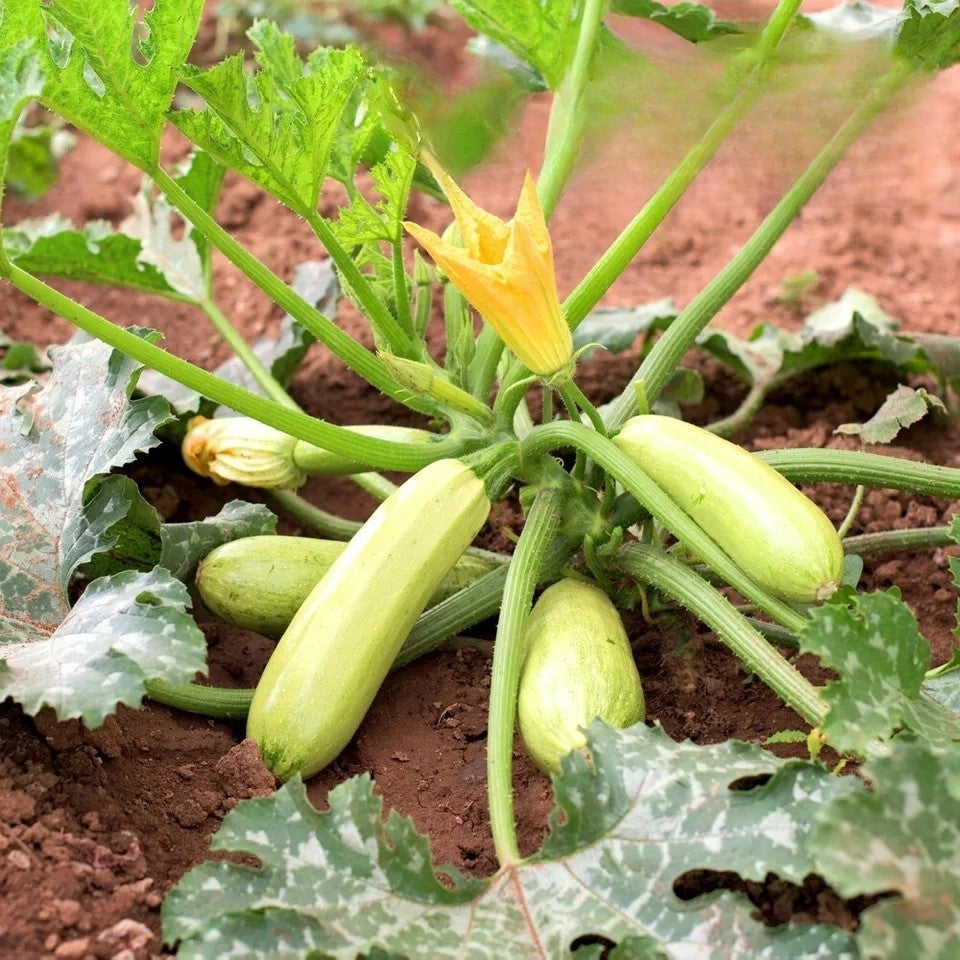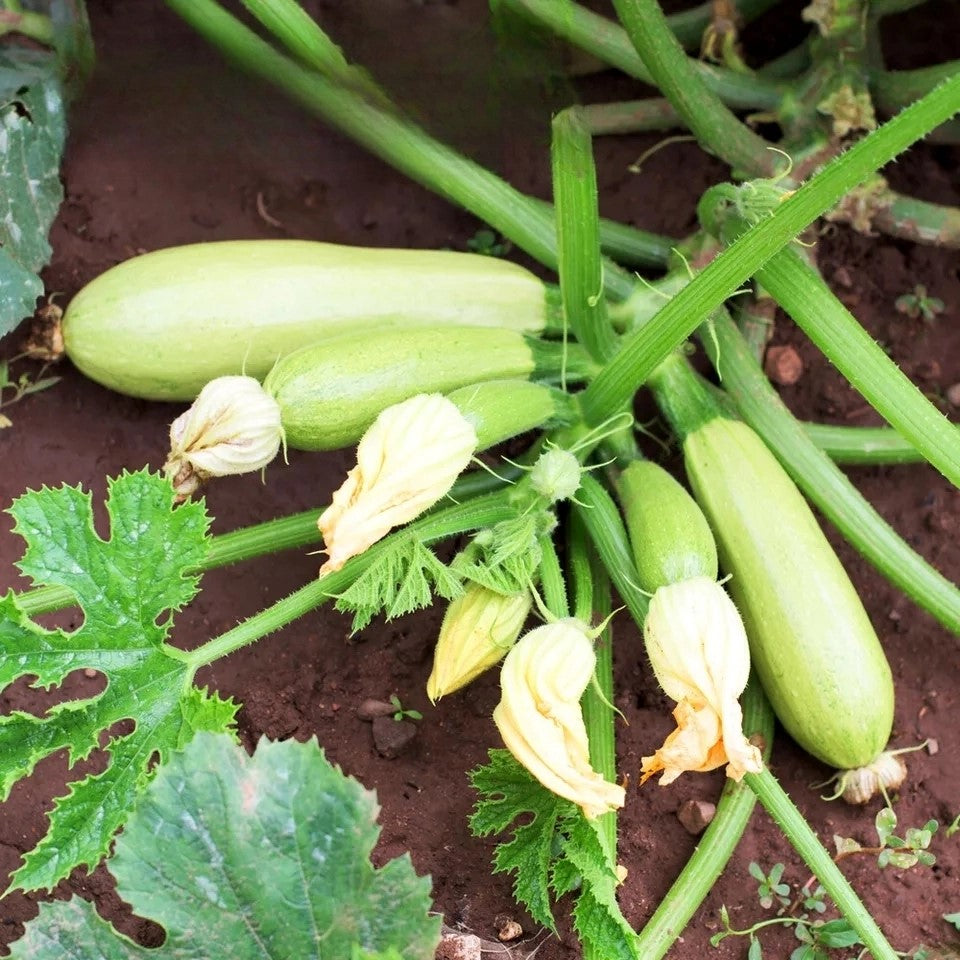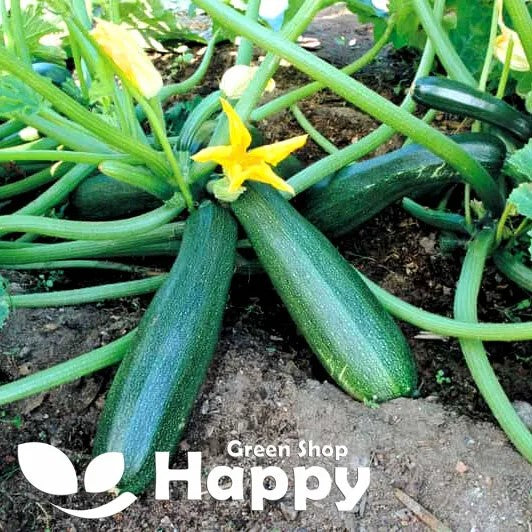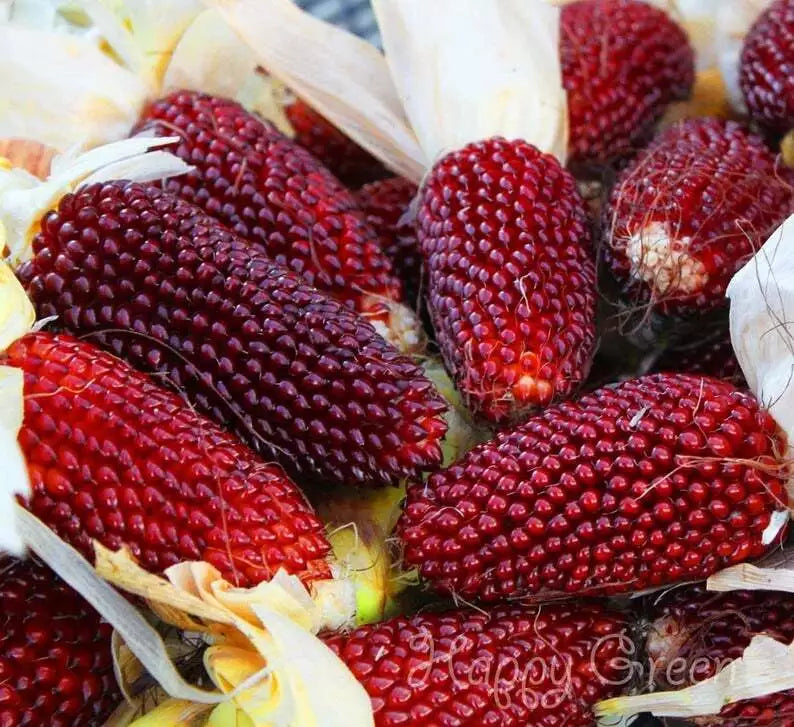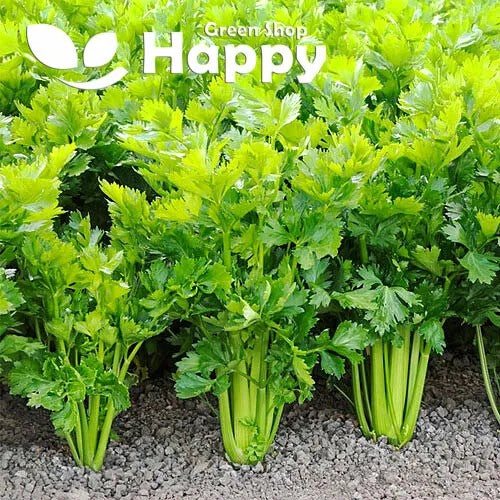Sort by:
52 products
52 products
Herb Corn Salad Seeds (Valerianella locusta)
Also known as Lamb’s Lettuce or Mâche, Corn Salad is a fast-growing leafy green with soft, nutty-flavored leaves. Popular in European cuisine, it’s perfect for salads, sandwiches, and as a tender garnish. Hardy and cold-tolerant, it thrives in cooler months, making it an excellent choice for autumn and winter harvests. Easy to grow and highly nutritious, it’s a must-have for year-round salads.
How to Grow
-
Sow directly outdoors from March to May, and again from August to October.
-
Prefers fertile, well-drained soil in full sun or partial shade.
-
Sow thinly, 1 cm deep, in rows 20 cm apart.
-
Thin seedlings to 10 cm spacing for healthy plants.
-
Harvest young leaves as needed for cut-and-come-again cropping.
Key Features
-
Tender, nutty-flavored leaves
-
Hardy and cold-tolerant, ideal for winter salads
-
Quick and easy to grow
-
Perfect for cut-and-come-again harvesting
-
Highly nutritious and versatile in the kitchen
Ideal For
-
Autumn and winter vegetable gardens
-
Fresh salads and sandwich fillings
-
Containers, raised beds, and small gardens
-
Gardeners seeking a reliable cool-season green
Sowing
-
Best time: March–May, August–October
-
Depth: 1 cm
-
Spacing: 10 cm between plants, 20 cm between rows
-
Position: Full sun or partial shade
-
Harvest: October to March
Quick Tip
-
Succession sow every few weeks for a continuous supply of fresh leaves throughout the cooler seasons.
Greek Oregano – Seeds (Origanum hirtum)
Greek Oregano (Origanum hirtum) is a robust perennial herb, prized for its intensely aromatic leaves that are essential in Mediterranean cooking. Known for its strong flavor, it is a must-have for seasoning pizzas, pasta, roasted meats, and vegetables. Easy to grow and drought-tolerant, it also produces clusters of small white flowers that attract bees and other pollinators.
Why Grow Greek Oregano?
-
Classic Mediterranean herb with strong, authentic flavor
-
Hardy perennial, easy to maintain
-
Drought-tolerant and thrives in poor soils
-
Attracts bees and pollinators when in bloom
Key Features
-
Type: Perennial herb
-
Height: 30–60 cm
-
Spread: 30–45 cm
-
Flowering: June–August
-
Position: Full sun
-
Soil: Light, well-drained
Ideal For
-
Culinary herb gardens
-
Mediterranean and rock gardens
-
Container growing
-
Pollinator-friendly borders
Sowing & Growing
-
Sow indoors: February–April in trays/pots
-
Germination: 10–21 days at 18–22°C
-
Transplant outdoors: After frost risk has passed
-
Direct sow outdoors: May–June
-
Spacing: 25–30 cm apart
-
Harvest leaves regularly for best flavor
Tip: Trim plants after flowering to keep them compact and encourage fresh growth.
French Bean 'Ibiza' – Seeds (Phaseolus vulgaris)
The French Bean 'Ibiza' is a high-yielding, reliable variety producing straight, slender pods with excellent flavor and texture. Perfect for picking young and tender, these beans are stringless, smooth, and packed with vitamins, making them a staple for summer gardens. Suitable for outdoor growing or in polytunnels, this variety is loved by gardeners for its productivity and long harvest window.
How to Grow
-
Sow indoors from April for planting out after frost, or sow direct outdoors from May to July.
-
Sow seeds 4–5 cm deep, spacing 15 cm apart, in rows 40–50 cm apart.
-
Prefers well-drained, fertile soil in a sunny, sheltered spot.
-
Water regularly, especially in dry spells.
-
Pick pods regularly to encourage continuous cropping.
Key Features
-
Straight, stringless pods with excellent taste
-
Heavy cropping, long harvest season
-
Rich in vitamins A, C, and K
-
Suitable for fresh use or freezing
-
Compact habit, ideal for small gardens or allotments
Ideal For
-
Steaming, boiling, and stir-frying
-
Freezing for later use
-
Companion planting in vegetable gardens
-
Garden beds, raised beds, or containers
Sowing & Harvest
-
Sow: April to July
-
Depth: 4–5 cm
-
Spacing: 15 cm apart, 40–50 cm between rows
-
Harvest: July to September
Quick Tip
-
Harvest pods while young and tender for the best flavor. Regular picking boosts yield.
Cucumber 'Marketmore' – Seeds (Cucumis sativus)
Cucumber 'Marketmore' is a classic, reliable outdoor cucumber variety producing dark green, smooth-skinned fruits with crisp texture and excellent flavor. Highly productive and resistant to common diseases, it is perfect for slicing, salads, and fresh eating. Vigorous and easy to grow, ‘Marketmore’ is a favorite among both beginners and experienced gardeners.
How to Grow
-
Sow indoors: April – May in pots or trays.
-
Transplant outdoors: After last frost into a sunny, sheltered spot.
-
Sow direct outdoors: May – June, once soil is warm.
-
Spacing: 45–60 cm apart in rows or beds.
-
Provide regular watering and mulch to keep soil moist.
Key Features
-
Classic slicing cucumber variety
-
Smooth, dark green, uniform fruits
-
Crisp, refreshing flavor
-
Heavy cropping and reliable yields
-
Resistant to common cucumber diseases
Ideal For
-
Outdoor vegetable plots and raised beds
-
Fresh summer salads and sandwiches
-
Gardeners seeking a tried-and-true cucumber variety
Sowing & Harvest
-
Sow: April – June
-
Harvest: July – September
Quick Tip
Pick fruits regularly to encourage continuous production. Avoid letting cucumbers grow too large for the best taste and texture.
Courgette 'Stiato d'Italia' – Seeds (Cucurbita pepo)
Add authentic Italian flavor to your garden with Courgette 'Stiato d'Italia', an heirloom variety renowned for its striped green fruits and tender, sweet flesh. Perfect for summer harvests, these elegant courgettes are ideal for grilling, roasting, stuffing, or fresh salads. Prolific and easy to grow, 'Stiato d'Italia' combines visual appeal with gourmet taste.
How to Grow
. Sow indoors: March – May, 1–2 cm deep in pots
. Transplant outdoors: After last frost, spacing 70–90 cm apart
. Sow outdoors: May – June in fertile, well-drained soil
. Prefers full sun and regular watering
. Harvest fruits 15–20 cm long for the best flavor and texture
Key Features
. Italian heirloom zucchini with striking striped green skin
. Tender, mild-flavored flesh for versatile cooking
. Prolific and early-bearing variety
. Perfect for grilling, roasting, stuffing, or salads
. Decorative, uniform fruits ideal for home gardens
Ideal For
. Fresh summer cooking and Italian dishes
. Gardeners seeking unique and attractive courgettes
. Small vegetable beds, allotments, or containers
. Gourmet recipes including stuffed or roasted zucchini
Sowing & Harvest
. Sow: March – June
. Harvest: June – September
Quick Tip
Harvest regularly when fruits are young and slender to encourage continuous production throughout the season.
Courgette 'Bolognese' – Seeds (Cucurbita pepo)
Bring the taste of Italy to your garden with Courgette 'Bolognese', a prolific heirloom variety prized for its slender, dark green fruits and tender, flavorful flesh. Perfect for summer kitchens, these versatile courgettes are ideal for sautéing, grilling, stuffing, and fresh salads. Easy to grow and highly productive, 'Bolognese' is a favorite among gardeners seeking reliable yields and gourmet flavor.
How to Grow
. Sow indoors: March – May, 1–2 cm deep in pots
. Transplant outdoors: After last frost, spacing 70–90 cm apart
. Sow outdoors: May – June in fertile, well-drained soil
. Prefers full sun with regular watering
. Harvest: 15–20 cm long for the best texture and flavor
Key Features
. Italian heirloom zucchini with dark green skin
. Tender, mild-flavored flesh suitable for a variety of dishes
. High-yielding and early-producing variety
. Ideal for sautéing, grilling, stuffing, or salads
. Compact plant suitable for home gardens
Ideal For
. Fresh summer cooking and Italian cuisine
. Home gardeners seeking reliable yields
. Gourmet dishes including stuffed or roasted courgettes
. Small vegetable beds or allotments
Sowing & Harvest
. Sow: March – June
. Harvest: June – September
Quick Tip
Pick courgettes when young and slender to ensure the most tender flesh and to encourage continued fruiting.
Courgette 'Astra Polka' Seeds (Cucurbita pepo)
Add a splash of color to your vegetable patch with Courgette 'Astra Polka', a prolific and compact variety producing golden-yellow fruits. This reliable courgette has a mild, sweet flavor and tender flesh, making it perfect for grilling, stir-fries, or summer salads. Its vibrant fruits stand out both in the garden and the kitchen.
How to Grow
-
Sow indoors in April–May or directly outdoors after frost.
-
Use rich, well-drained soil in full sun.
-
Sow 2–3 seeds 2 cm deep in pots or stations.
-
Thin to one strong plant per station, spacing 60–80 cm apart.
-
Harvest young fruits regularly to encourage continuous production.
Key Features
-
Compact, high-yielding variety
-
Attractive golden-yellow courgettes
-
Mild, sweet flavor with tender texture
-
Perfect for grilling, roasting, stir-fries, and salads
-
Heavy and reliable cropper all season
Ideal For
-
Home gardeners with limited space
-
Garden-to-table cooking
-
Summer dishes and fresh eating
-
Adding color to both plate and harvest basket
Sowing
-
Best time: April to June
-
Depth: 2 cm
-
Spacing: 60–80 cm between plants
-
Position: Full sun, fertile soil
-
Harvest: From July onwards
Quick Tip
-
Pick fruits when small (10–15 cm) for the best flavor and to keep plants producing abundantly.
Corn ‘Strawberry’ Popping – Seeds (Zea japonica)
Corn ‘Strawberry’ Popping (Zea japonica) is a unique and colorful popping corn variety, known for its small, pinkish-red kernels that produce delicious, fluffy popcorn. Easy to grow, this hardy annual thrives in fertile, well-drained soil with full sun exposure. Perfect for home gardens, educational planting, or novelty popcorn at harvest, it also produces tall, attractive stalks that add vertical interest to borders and vegetable plots.
Why Grow "Strawberry" Popping
-
Pinkish-red kernels for fun, colorful popcorn
-
Hardy, easy-to-grow annual
-
Tall, attractive stalks for vertical garden interest
-
Perfect for edible harvest, home gardens, and educational projects
Key Features
-
Type: Annual (Zea japonica)
-
Height: 120–150 cm
-
Flowering/Fruiting: Summer to early autumn
-
Position: Full sun
-
Uses: Edible popcorn, ornamental planting, educational gardening
Ideal For
-
Home gardens and backyard harvest
-
Educational planting for children and schools
-
Ornamental garden display with tall stalks
-
Unique popcorn for novelty harvests
Sowing & Growing
-
Sow outdoors: April–May in fertile, well-drained soil
-
Germination: 7–14 days at 20–25°C
-
Space plants: 25–30 cm apart in rows 60–75 cm apart
-
Water regularly until established
Celery ‘Utah’ Seeds (Apium graveolens var. secalinum)
Grow crisp, tender stalks with Celery ‘Utah’ (Apium graveolens var. secalinum). This reliable variety produces tall, smooth, green stems with a fresh, mild flavor, perfect for salads, soups, and stews. Known for its disease resistance and consistent quality, it’s a favorite for home gardeners and a must-have in the kitchen garden.
How to Grow
-
Sow seeds indoors 8–10 weeks before the last frost.
-
Use moist, fertile, well-drained soil in full sun.
-
Sow seeds thinly on the surface, pressing gently without covering deeply.
-
Keep soil consistently moist; germination may take 14–21 days.
-
Transplant seedlings outdoors after frost, spacing 25–30 cm apart.
-
Harvest stems when they reach full size but remain crisp.
Key Features
-
Produces tall, smooth, green stalks
-
Crisp texture with a mild, refreshing flavor
-
Excellent for soups, stews, and salads
-
Strong, reliable, and disease-resistant variety
-
Perfect for home gardens and allotments
Ideal For
-
Fresh salads, cooking, and soups
-
Vegetable gardens, allotments, and raised beds
-
Gardeners who want a reliable, easy celery variety
-
Continuous harvesting through the season
Sowing
-
Best time: Indoors 8–10 weeks before last frost
-
Depth: Surface sow, cover lightly
-
Spacing: 25–30 cm apart
-
Prefers full sun and fertile, moist soil
Quick Tip
-
Water regularly and mulch around plants to keep soil cool and prevent stems from becoming tough or stringy.
Showing 45/52





